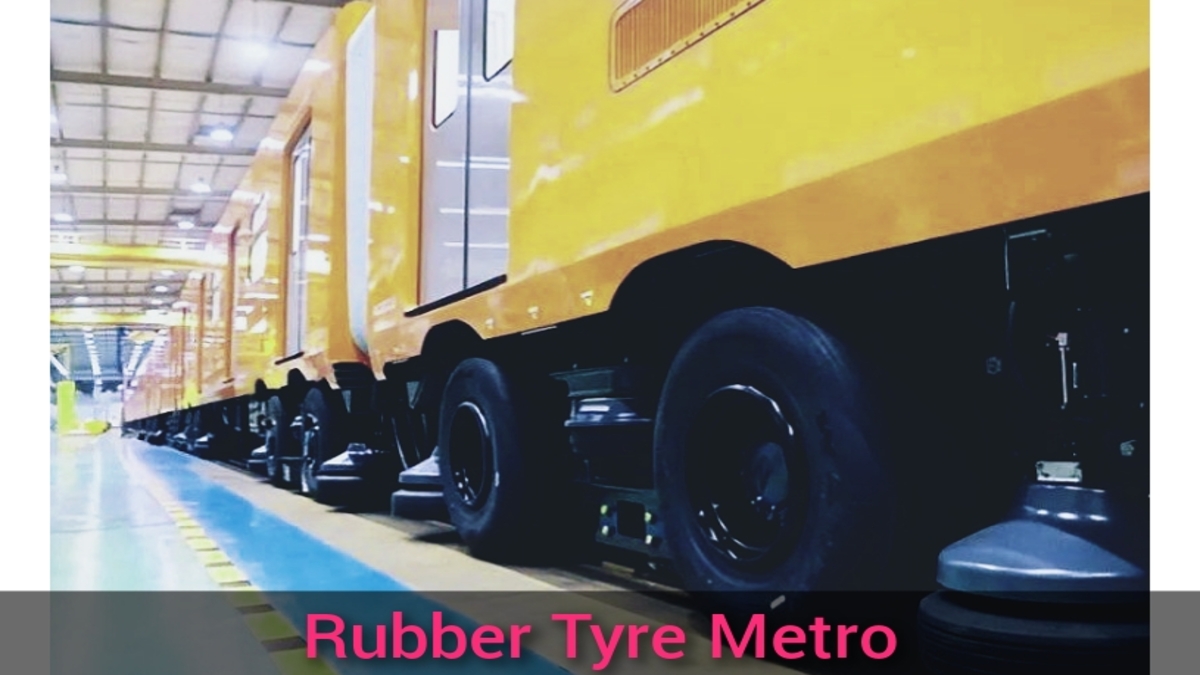Table of Contents
What Is Rubber Tyred Metro?
A rubber tyred metro is a type of fast transportation system that employs a combination of road and rail technologies. It is also called as rubber tired metro.

Unlike traditional trains, the vehicles in a rubber-tyred metro feature wheels equipped with rubber tires similar to those of buses. The system operates using a pair of parallel concrete or corrugated steel tracks, each with the same width as a tire.
These rubber-tyred vehicles use the guide way to gain traction, while also utilizing steel wheels with flanges on steel tracks to maintain guidance along the way.
Concept Of Rubber Tyred Metro
In this system a series of rubber tires are mounted on wheels and run on a track. These rubber tires provide more comfort than conventional steel tyres.
Rubber tires are able to absorb shock and reduce noise. The metro with rubber tires can move smoothly on steep climbs and tight turns. They also provide better traction, which allows trains to accelerate and decelerate more quickly. This makes it ideal for use in urban areas where space is limited and terrain is challenging.
Rubber tyre metro is capable of operating at higher speeds than conventional subway systems, which can help reduce travel times and improve the overall efficiency of the system.
Advantages
- Comfortable ride: Rubber-tired metro systems provide a smooth and comfortable ride with less jostling around.
- High speed: These systems have faster acceleration than conventional rail tracks, which allows for quicker journey times.
- Shorter braking distances: Rubber-tired trains can be signalled closer together due to shorter braking distances.
- Ability to climb or descend steep slopes: These systems can climb or descend steeper slopes (up to a gradient of 13%) than conventional rail tracks, which may require a rack.
- Quiet ride: Rubber-tired trains are quieter than conventional trains when travelling in open air, reducing noise pollution for nearby residents.
Disadvantages
- Higher energy consumption: Rubber-tired trains have a higher energy consumption compared to conventional rail systems.
- More heat generated: These systems generate more heat than conventional rail tracks.
- Weather variance: The traction advantage of rubber-tired trains is lost in inclement weather such as snow and ice.
- Heavier: Rubber-tired trains are heavier than conventional trains as steel rails are still required for switching, providing electricity to the trains, and as a safety backup.
- Tyre replacement cost: The cost of replacing worn or damaged tires can be significant.
- Higher in-tunnel noise: Rubber-tired trains produce a higher level of noise in tunnels due to the sound created by the tires.
Faqs
Reduce noise, better traction and braking, and provide a comfortable ride.
Paris Metro Line 11, opened in 1956.
